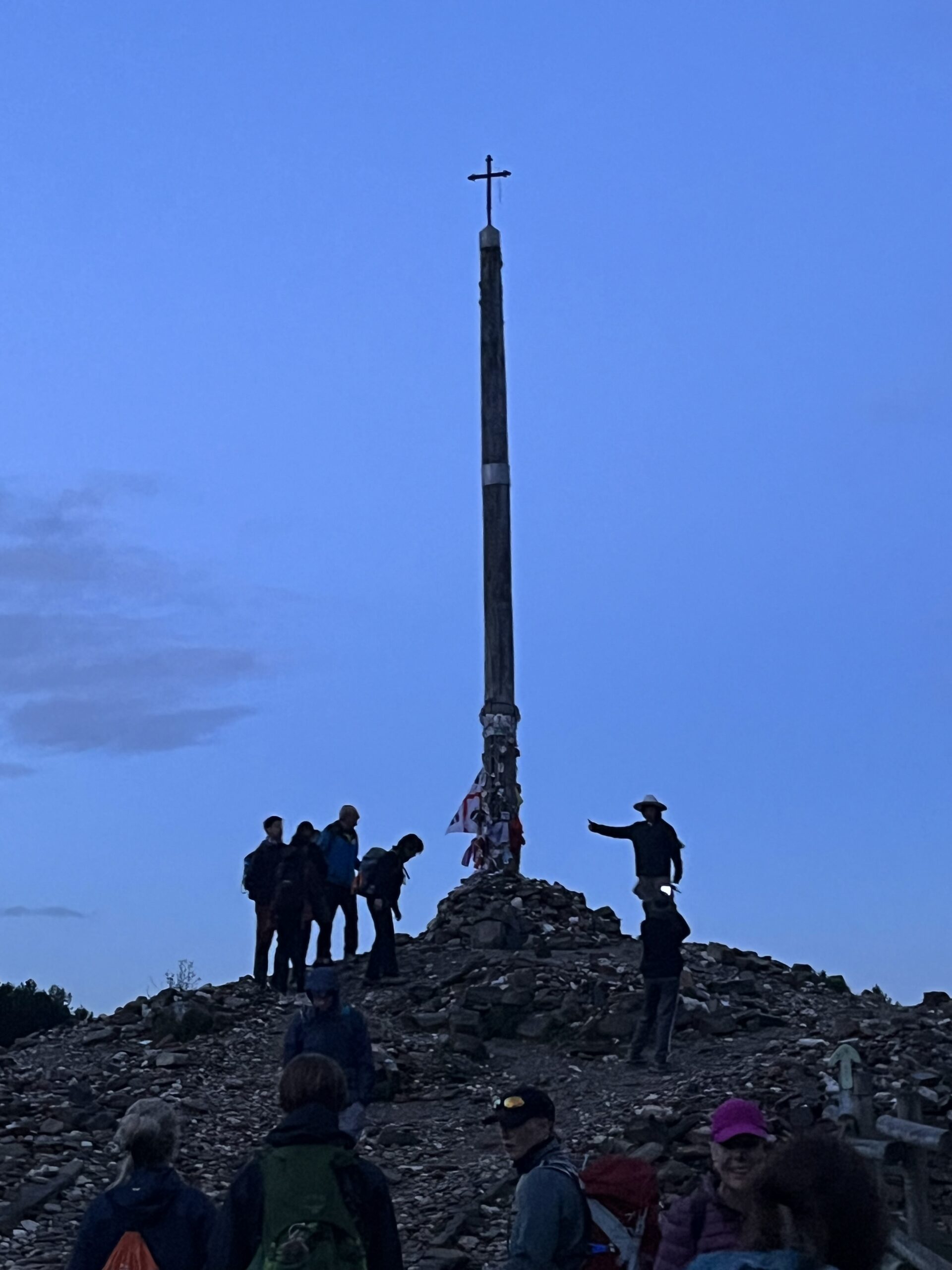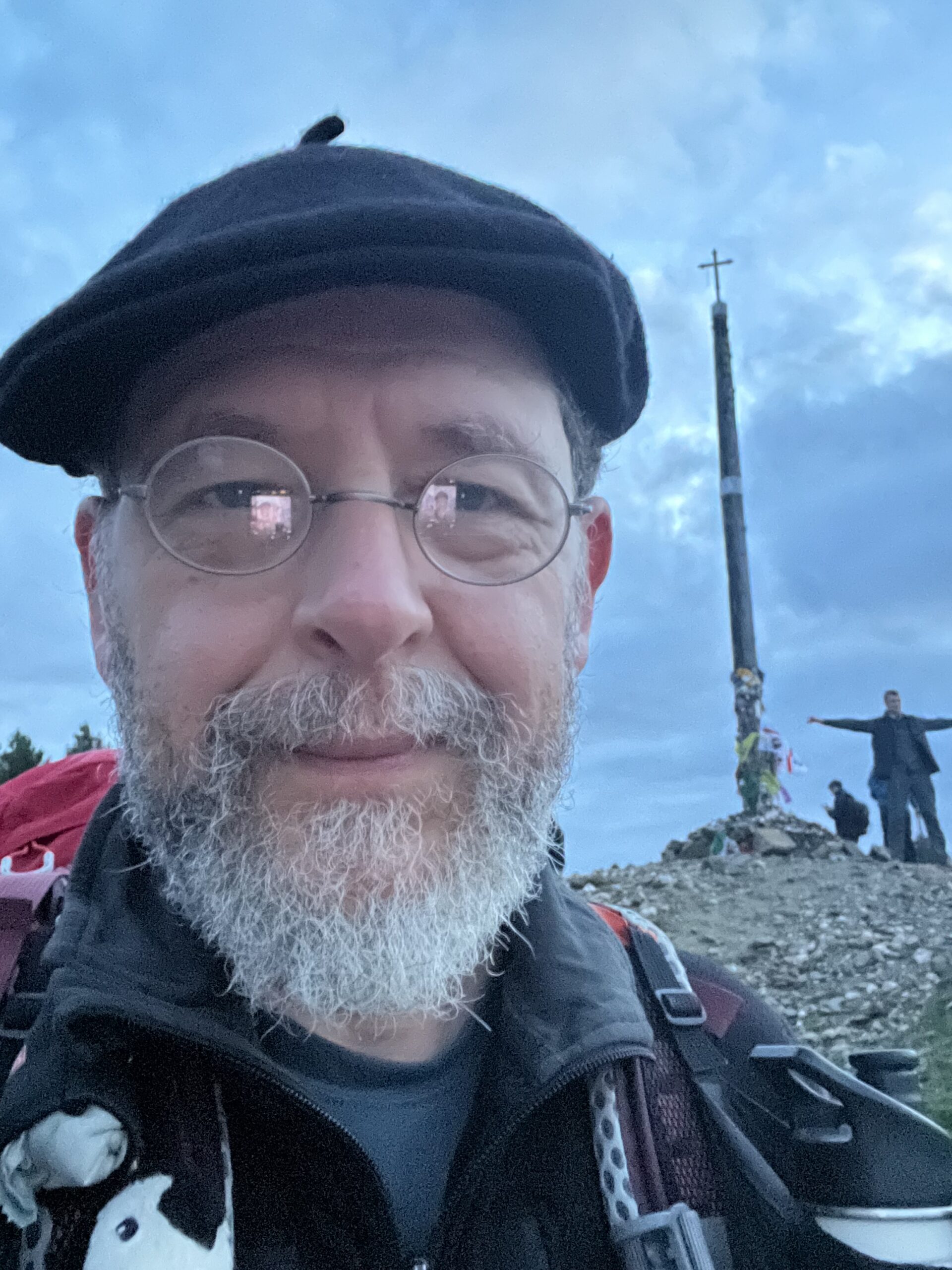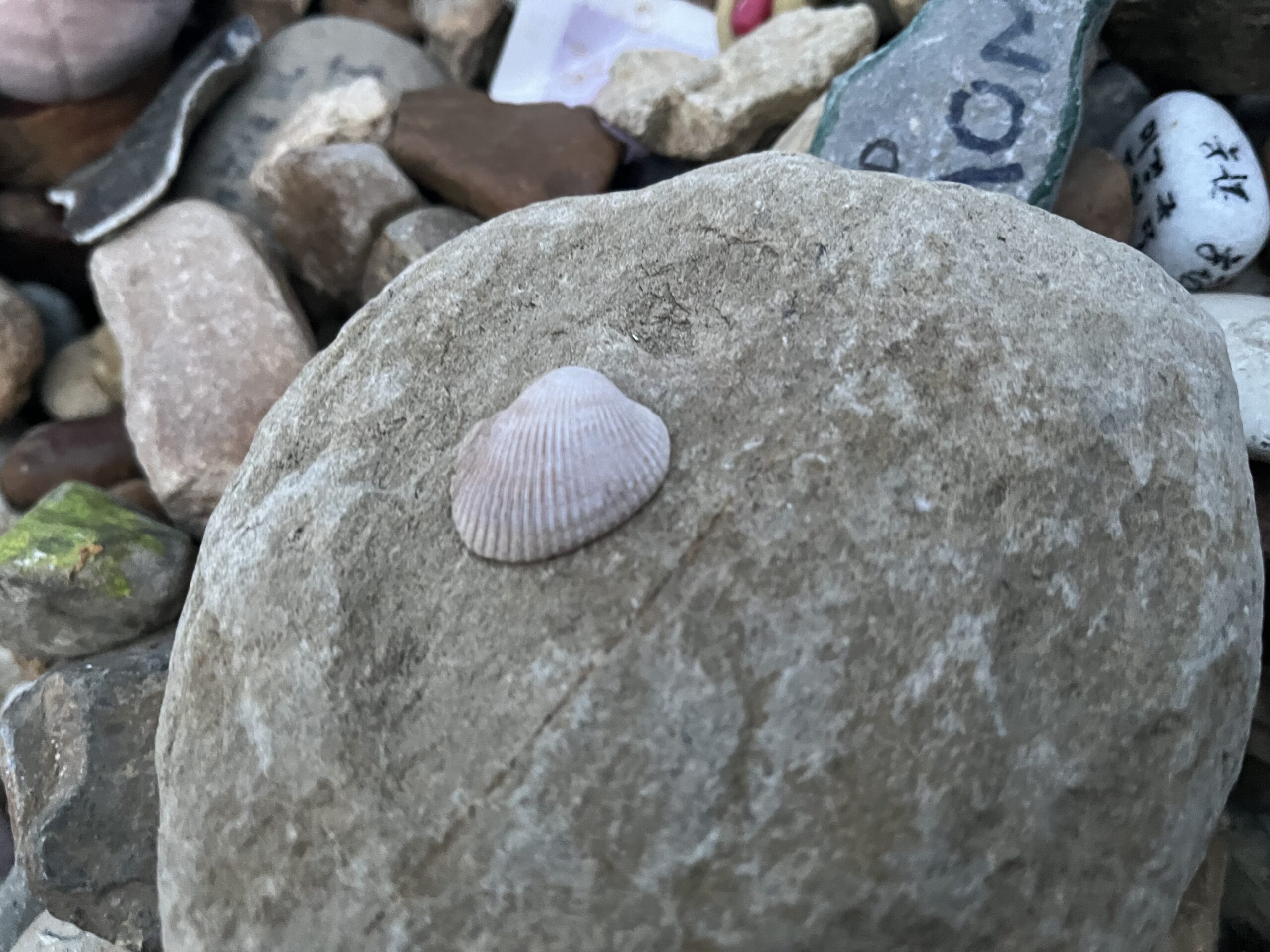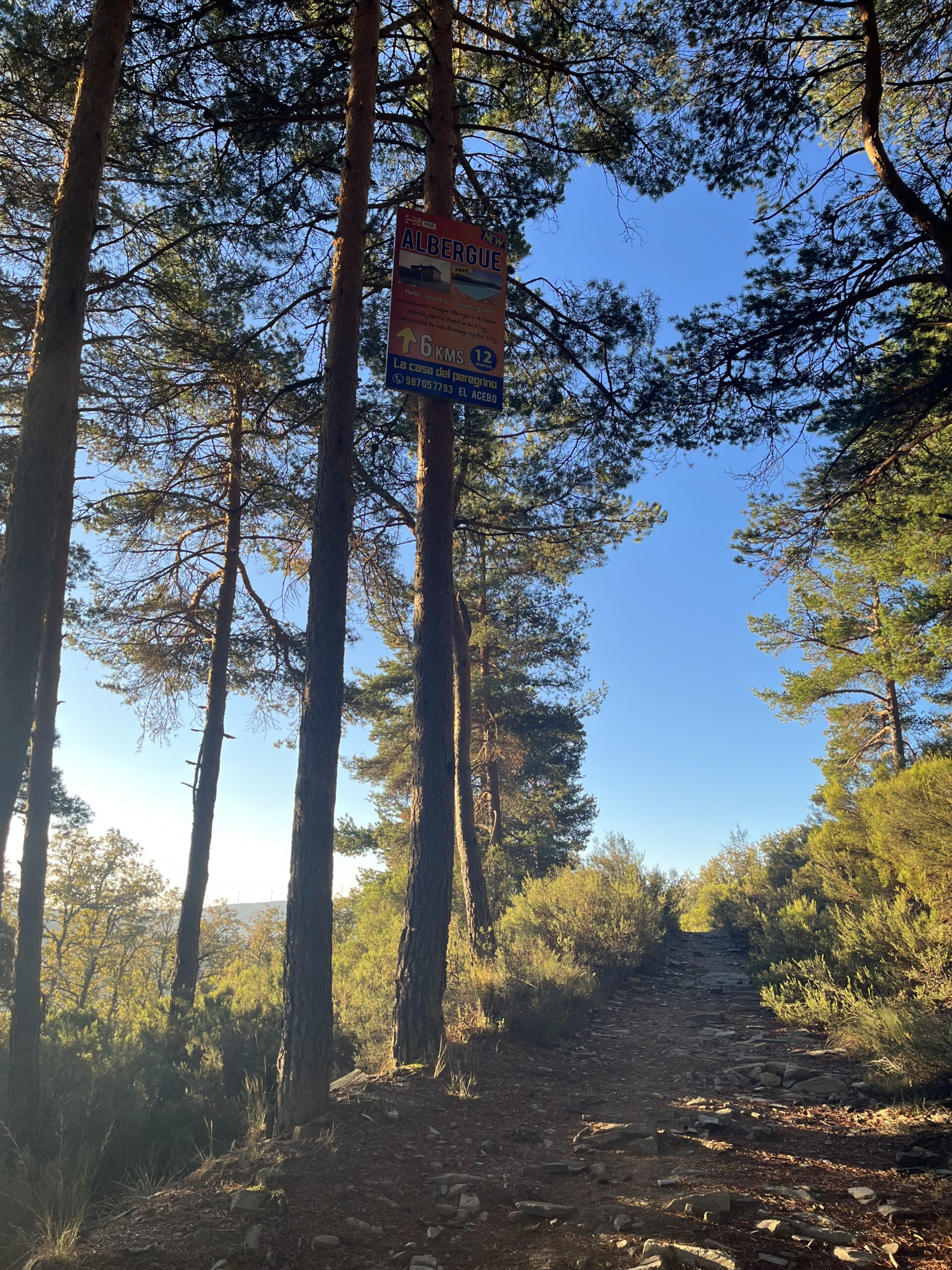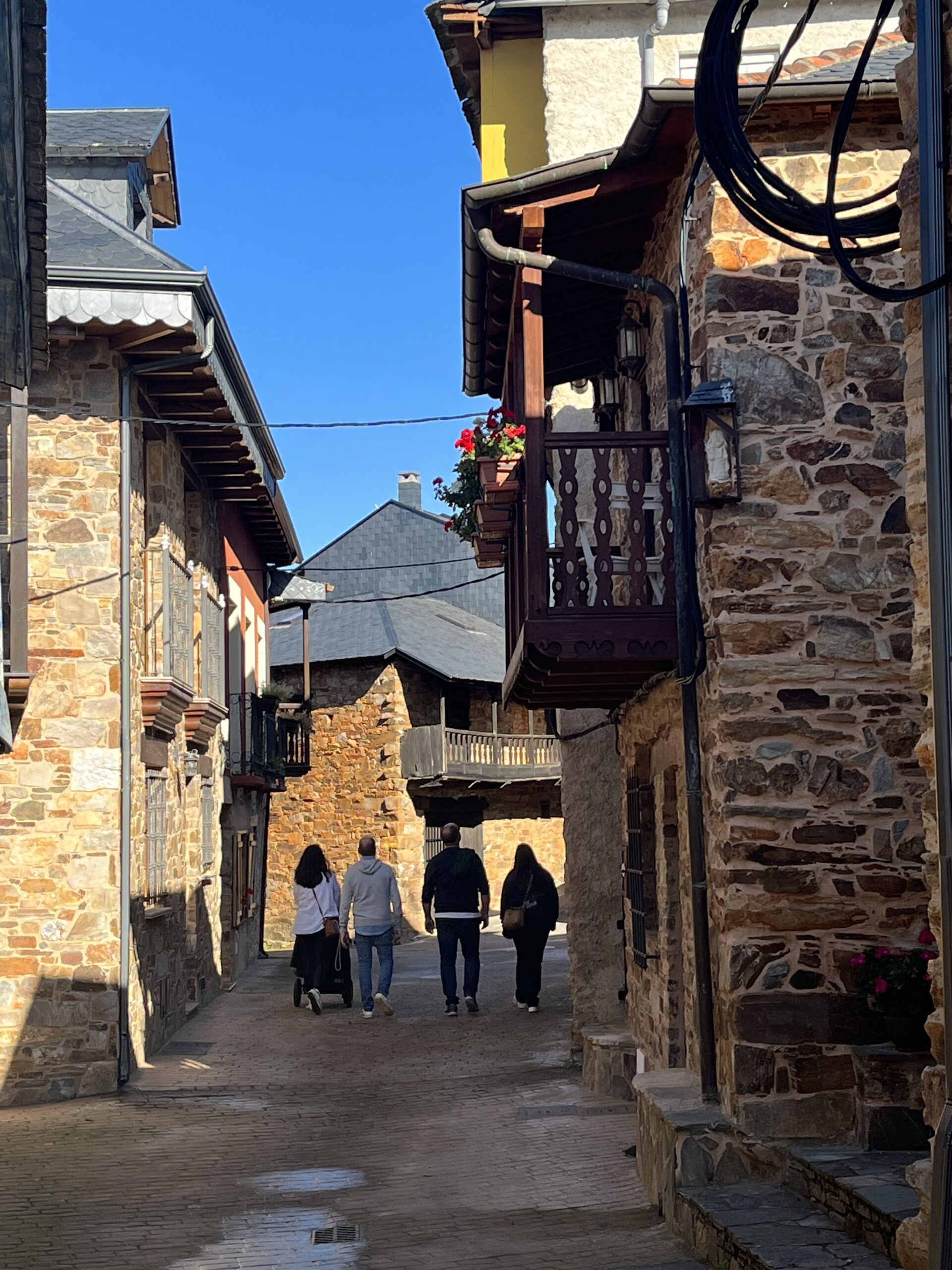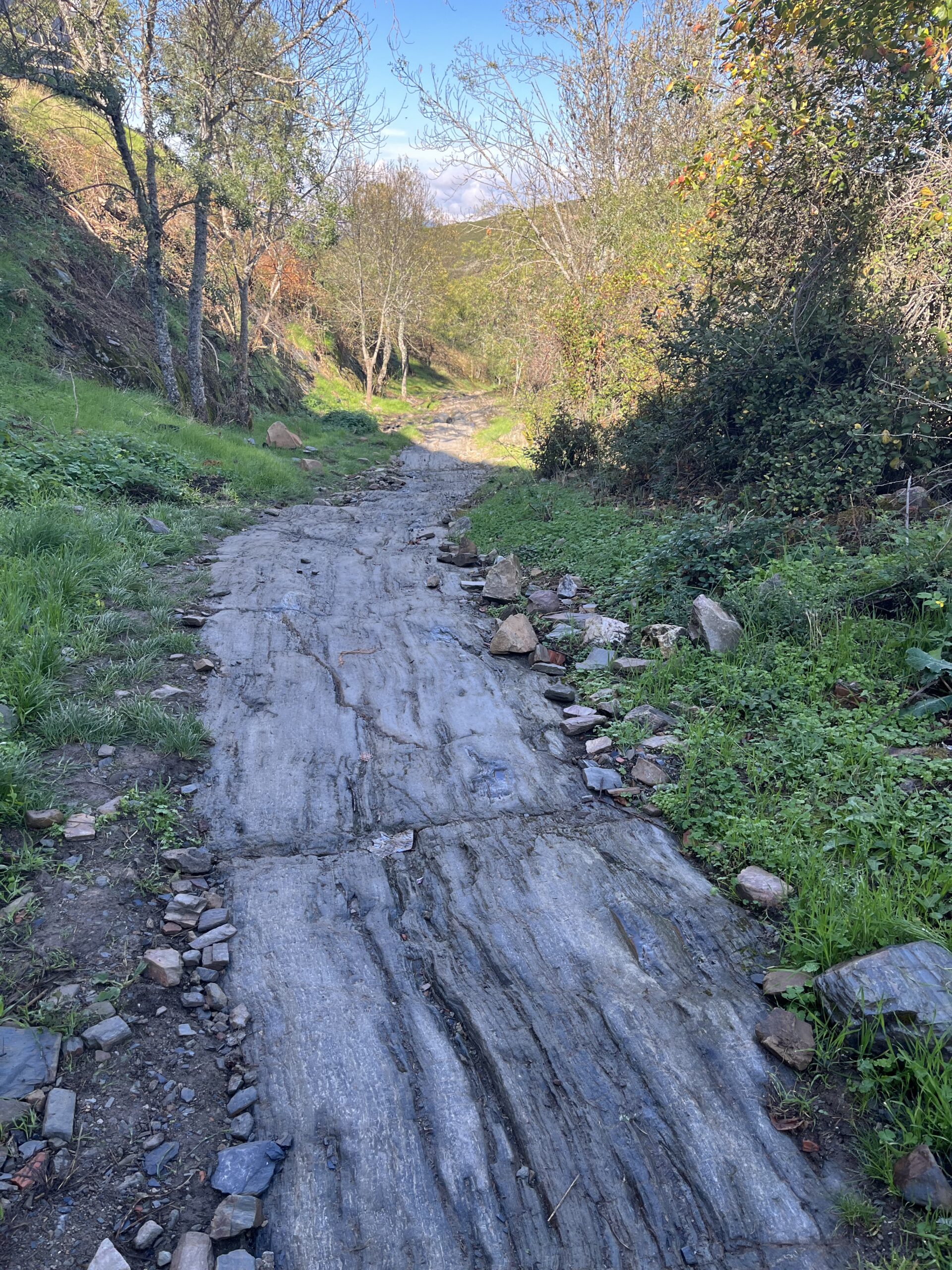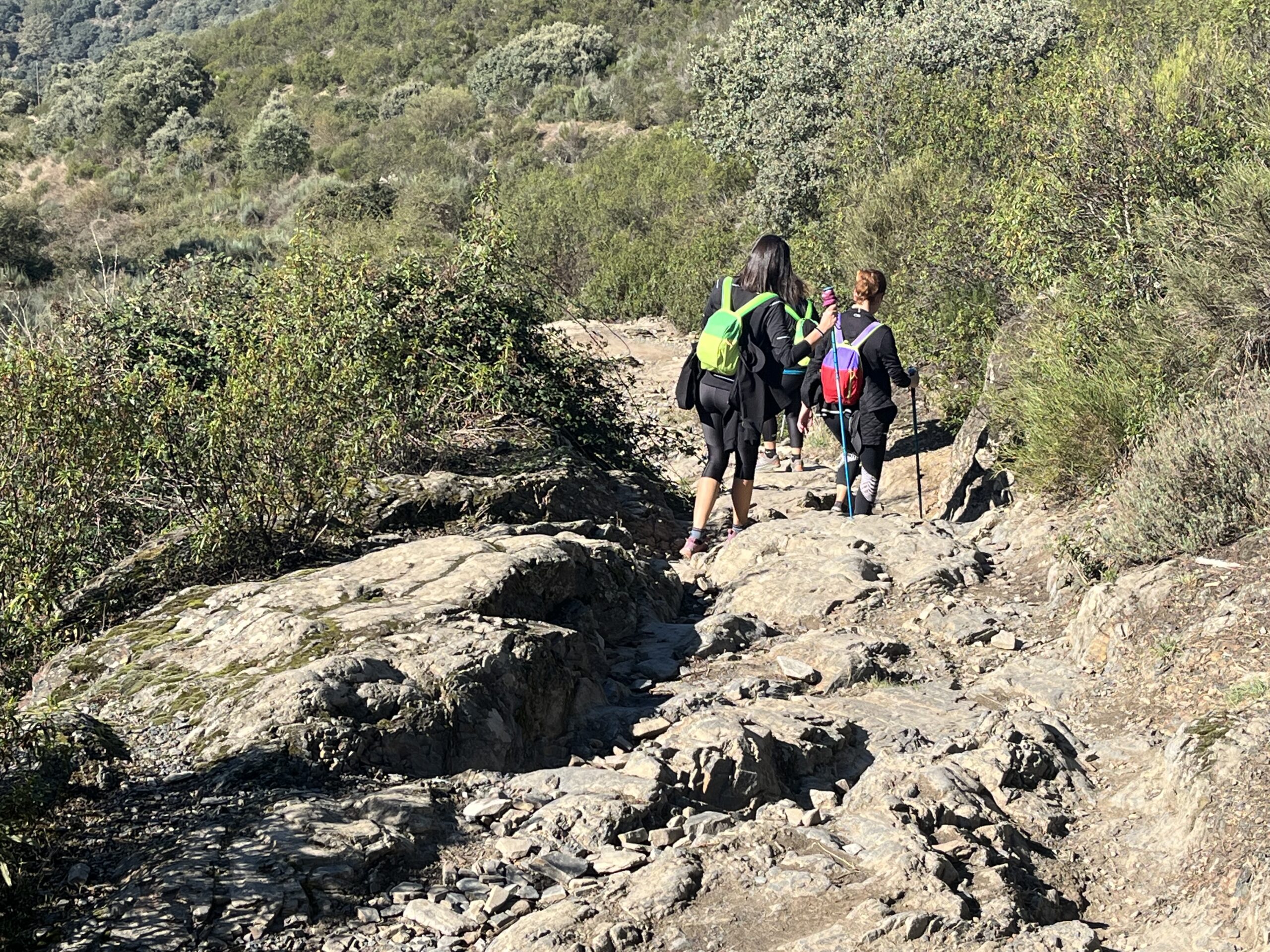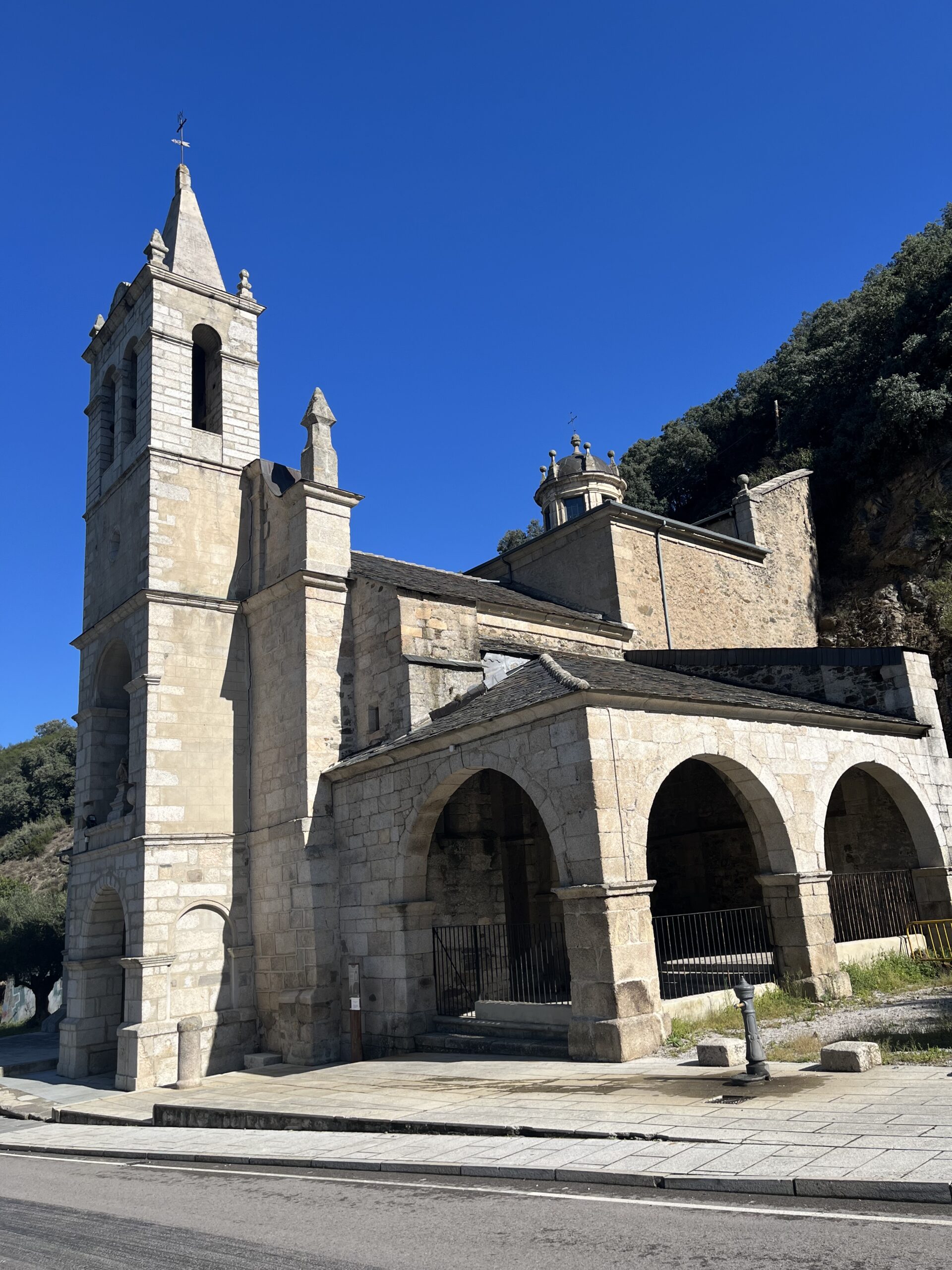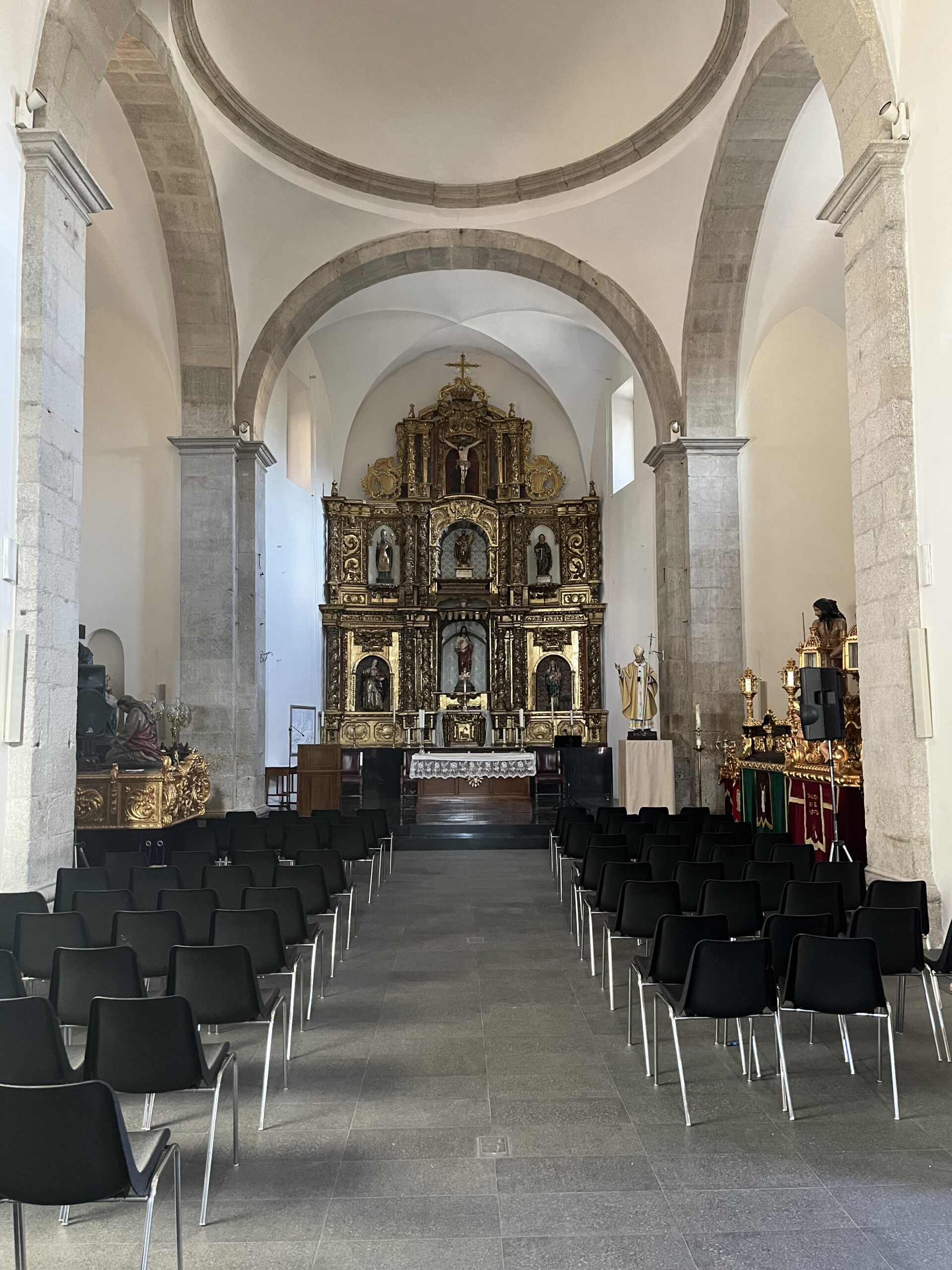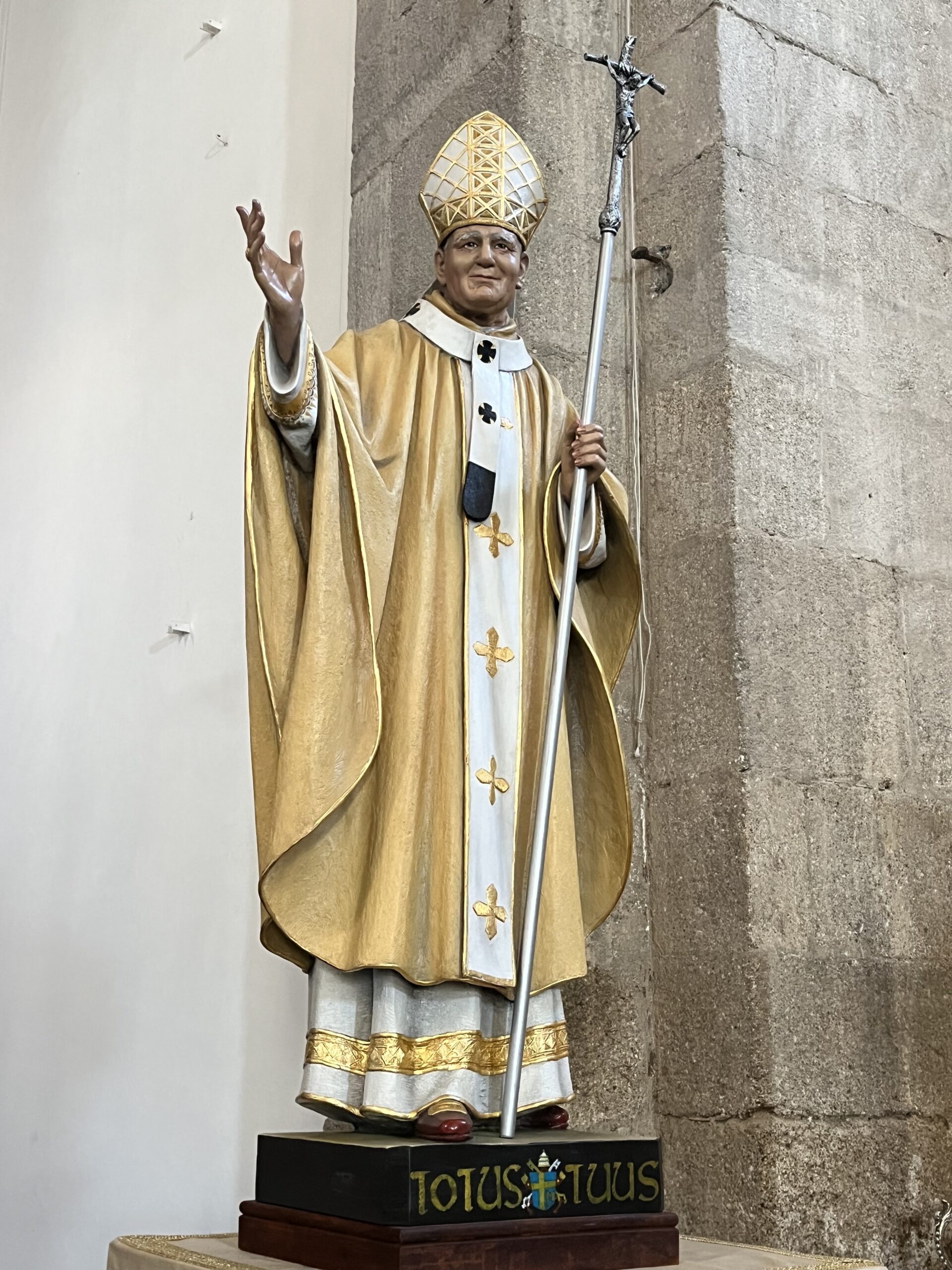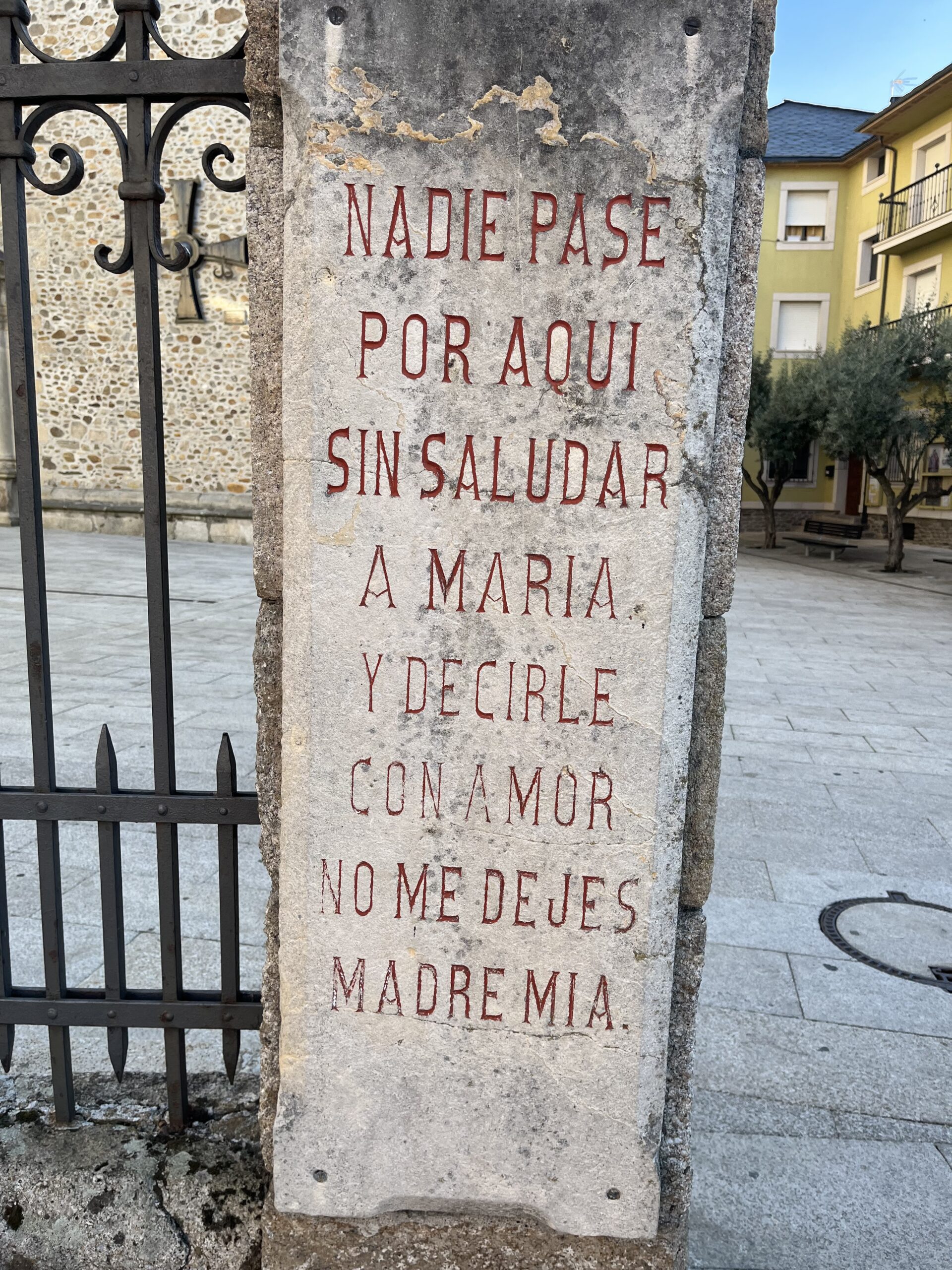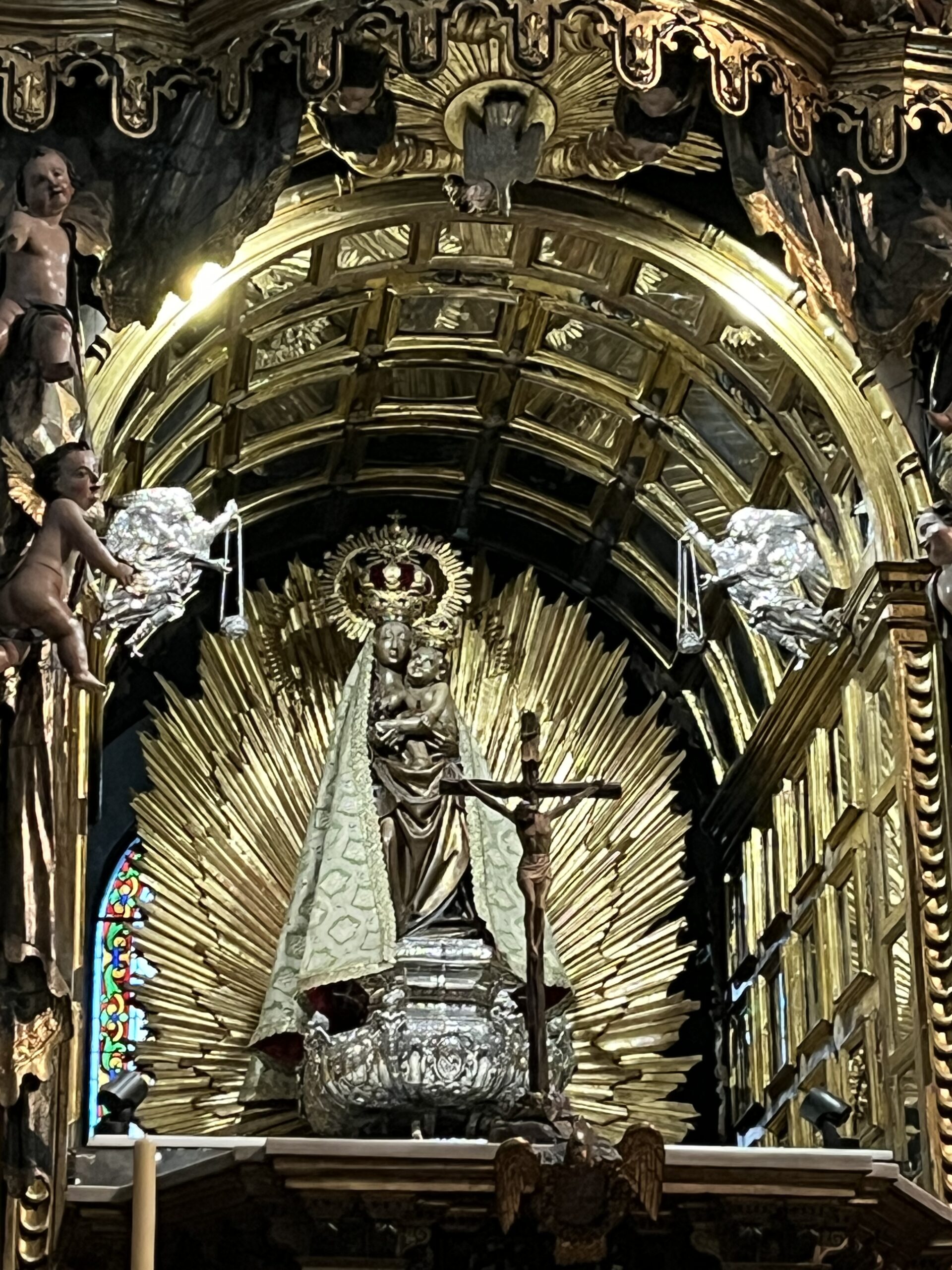Via Podiensis: From the Cross to the Valley
Today I had two objectives: be at Cruz de Ferro when it was light, and arrive in Ponferrada in one piece. Spoiler alert: yes! However, it was a long day, longer than it had any right to be.
So to start at the beginning, what is Cruz de Ferro?
Cruz de Ferro is, as the name suggests, an iron cross. It is set high on a wooden pole at what is supposed to be the highest elevation on the Spanish Camino1.
There is an old tradition here. Although I’ve heard several stories about how it got started in the Medieval era, I don’t know that any of them are true. Surrounding the cross is a large pile of stones. Pilgrims have been bringing a stone from their home and laying it at Cruz de Ferro for centuries. I am no different.
For some, the stone is a habit or sin to be discarded. For some, a memory or worry or fear to let go of.
Why here? Once you’ve carried a pack for several weeks (or months!) on the Camino, you come to realize that you can only carry so much, and you go farther and faster the less you carry.
Some days you forget to put down that stone you’re carrying, the one that’s weighing you down. When asked why angels could fly, G.K. Chesterton replied, “because they take themselves so lightly.” Perhaps for us to fly, we need to put down those stones we carry, the ones we keep collecting.
Today, in addition to my own stone, which also carried all of the prayers and intentions entrusted to me, I was carrying four stones left by pilgrims at the 2023 Gathering of American Pilgrims on the Camino that Francine and I attended earlier this year, as well as a small shell for a friend.
But first, breakfast! Today I would be walking through a pass in the Irago Mountains with very little in the way of facilities, so some serious fortification was in order. Fortunately, my albergue had an attached bar, so café con leche, orange juice, and some sort of chocolatey thing were soon acquired.
When I left at about 7:50, it was still dark, but I could see a dim light on the horizon already. As I climbed into the darkness, I could see the distant twinkling lights of Astorga far across the valley below.
I arrived at the cross at about 8:15, just before dawn. The place was already crowded with people.
I prayed and laid the stones and shell. It was hard to tell when the sun rose, exactly, because the east was full of clouds. But even with the crowds and clouds, there was something special about being here at dawn.
I ran into a number familiar faces there, including Fern from Korea and Tara. We left the cross together just after dawn.
The path was narrow and rocky, with occasionally long stretches of flat packed earth. We hadn’t gone more than a couple of kilometers before the clouds started breaking up.
And then we were back to walking the Dragon’s back to the tune of distant cowbells. After a moment, it began to occur to us that some of those cowbell sounds a little more… musical than might be expected. As we walked downhill, we discovered the source of the sound: a food truck with a radio which may or may not have been the bounds of the village of Manjarín. Certainly, there was a sign, but no actual village, just some ruins and a neo-Templar refugio built out of reclaimed stone.
And then it was a roadwalking for a bit before the Camino returned to a sort of narrow, rocky trail through the scrub and trees. Although the trail did widen up considerably for a while as I was walking along the top of the ridge, there were many places where it was so narrow and confined I couldn’t actually use my sticks.
Finally, about 9:40, I crossed the ridge enough that I could see the valley on the other side, filled with an ocean of clouds.
Just a few minutes later the long, rubble-filled treacherous descent began. I think this is the section of trail where Francine coined the phrase “goat path”, though there was also quite a bit of climbing down the Dragon’s back as well. There were even some relatively flat sections, though these were few and never lasted very long.
I am slower than many people on these sorts of downhills, and Tara quickly left me in the dust.
It was a difficult descent and honestly a relief to get to the bottom.
At 10:20, I walked into the village of El Acebo, ready for a short rest and second breakfast. This little town thrives on the pilgrim trade, of course, but unlike some of the others of the past days it seems to have an independent life of its own as well.
The little parish church of San Miguel was founded in the 12th century, but the building was substantially rebuilt 300 years later. I could only enter a small, glassed-in part of the narthex – it rather reminded me of a cry room – and not the main part of the church. Nevertheless, I prayed here for the intentions of the Camino and left the village at about 11 AM.
I was not even halfway through the day, and I definitely needed to get a move on.
The Camino left town by means of a dirt road. In the distance I could hear rifle shots, and I soon passed a sign warning me of wild boar. Welcome to an entirely new region of Spain!
This is the valley of El Bierzo, which I will be walking through for the next few days before climbing over another set of hills into Galicia. This small region has a culture – and a cuisine – distinct from its neighbors. They also produce a wine that, while not widely exported, is among my favourites.
But before I was likely to get any wine, I had many kilometers to go. The terrain was hilly and full of scrubby bushes and grasses with stands of short stunted trees scattered on the hillsides, a reminder that I was still at altitude and had a way to go down yet.
Fortunately, these descents were on much better surfaces, mostly dirt.
About 11:40, I entered the village of Riego de Ambrós. Although I heard some children shouting somewhere, the only inhabitant I actually saw was a donkey.
Until, that is, I stopped into the little Ermita San Sebastian to pray and light a candle. I briefly met the local woman who maintains this place. She stamped my credential, and after my prayer wished me a heartfelt buen Camino.
At the very edge of town, I came upon the parish church. After spending entirely too long trying to find the entrance, I discovered it was locked. It was roadwalking out of the village on a two-lane asphalt road with no shoulder.
And this is where I discovered that I lost one of my rubber tips for my trekking poles. It’s also where I discovered that I had taken a wrong turn somewhere. I wasn’t on the Camino at all. It’s been a while since I’ve done that. I had to backtrack, uphill, to find the lost path.
It turns out that the closed parish church isn’t even on the Camino.
After the town sidewalk ended, it was some of the slipperiest downhill dragon walking yet. I recall having fallen on my butt here in the past. I didn’t slip and fall this time, but I did manage to bonk my head on a low branch. It’s always something.
At the bottom was a lovely dirt woodland trail. The trees gradually turned into scruffy bushes as I walked, but by about 12:20 I found myself back on probably that same two-lane asphalt road with no shoulder.
Fortunately, this didn’t last for long, and it was back to the dirt path. The Camino wound through the hill country, again becoming rockier as it descended.
About 12:45, after some truly hairy and slippery rocks, I spotted the town of Molinaseca in the valley below. This had been my lunch destination, but I was probably running almost an hour behind where I thought I’d be at this point.
I reached the town at about 1:05. It was an odd transition to go from scrambling down rocky hillsides to suddenly walking on sidewalk.
Immediately on your right as you enter town is the iconic Chapel Virgen de las Angustias, partially built into the hillside. I apparently missed opening hours by five minutes.
The town is split in two by the Río Meruelo, and a medieval bridge known as Puente de los Peregrinos – bridge of the pilgrims – still joins the two sides together. Through the centuries, the bridge has been adapted and rebuilt, most recently in the mid-20th century.
My feet were sore, and I was tired and hungry.
I found a place with a view of the bridge and had lunch. I got into a bit of a conversation, and I ended up not leaving until about 2 PM. This was not optimal, and I seriously considered staying there tonight. But in the end, my feet were restless and there was a Basilica I wanted to see in Ponferrada.
Once out of the town’s old medieval core, the Camino followed a sidewalk alongside a busy road with apartments and large houses on each side. Eventually, the buildings ended, but the sidewalk continued. It was sunny, but cool; I stuck with my broad brimmed hat rather than getting out the umbrella.
Ironically, at about 2:30, the sidewalk ended just as I caught my first glimpse of the city. After a hundred meters or so of roadwalking, it was on to a gravel road with one heck of a view of the surrounding hills. What I did not suspect, or remember, was that the Camino would go up into the foothills on a roundabout course into the city.
I arrived in the village/suburb of Campo at 2:45, and from here on in, it was walking through the suburbs with a little dash of roadwalking through some undeveloped land. I briefly made the acquaintance of two American pilgrims: Marty (a.k.a. Martha Mary quite contrary) from Casper Wyoming, and Eva from Wisconsin.
Suburbs became increasingly urban, and at some point I entered the city, although I’m not sure exactly when that was. In any case, I crossed the stone bridge over the river at about 3:17, far later than I had hoped to be here.
Less than fifteen minutes later, I was standing in front of the old Templar castle. I had any number of places I wanted to visit here, but first I had to secure a bed.
Once this was accomplished, I sat down and immediately fell asleep for almost two hours. After a quick shower and clothes washing, I headed back out.
My first stop was the church of San Andrés, which among other things contains giant floats depicting the stations of the cross that are carried through the streets during Holy Week processions. These are basically life-size. I prayed here for the intentions, and then moved on.
The streets were deserted before my nap; not so much afterwards.
It’s a holiday weekend in Spain, and all the monuments are free admission. I walked by the castle, but the line literally goes the entire length of it, so I was pretty sure I wasn’t getting in today. The Templar castle occupies a spot that was once a pre-Roman castro, then fortified by the Romans and then the Visigoths.
My next stop was the Basilica. The 16th-ish century Basilica Santa María de la Encina replaces an earlier 12th century structure. A miraculous image of the Virgin – found inside an oak tree, hence the name – is now in the retablo of the high altar.
Unlike the side altars, which are the most exuberant Baroque imaginable, the retablos of the high altar seem almost restrained in their Neoclassicism. I must make mention of the statues, particularly those of Saints Peter and Paul, which are probably pretty close to life-size and look like they’ve walked right out of scripture. Indeed, they are both walking forward, seemingly about to leap from their niches.
The statue of Virgin and Child – Santa María de la Encina herself – is unlike any similar image that I’ve seen. And I have seen a lot of them at this point. There’s a natural dynamism here – the infant Jesus looks almost squirmy in His mother’s lap.
The statue was found by the Templars, and it was presumed that it was hidden during the Moorish invasion. Given Ponferrada’s history is an important Roman site, the statue could only be a late Roman masterpiece. I’d like to learn a little more about this statue. It’s beautiful.
The main altar is, surprisingly, covered in Baroque decoration although it can’t be more than 50 years old.
There is a great feeling of peace in this place, and I prayed vespers here for the intentions of the Camino.
Date: 14 October 2023
Place: Ponferrada
Today started: Foncebadón
Today’s Photos!

